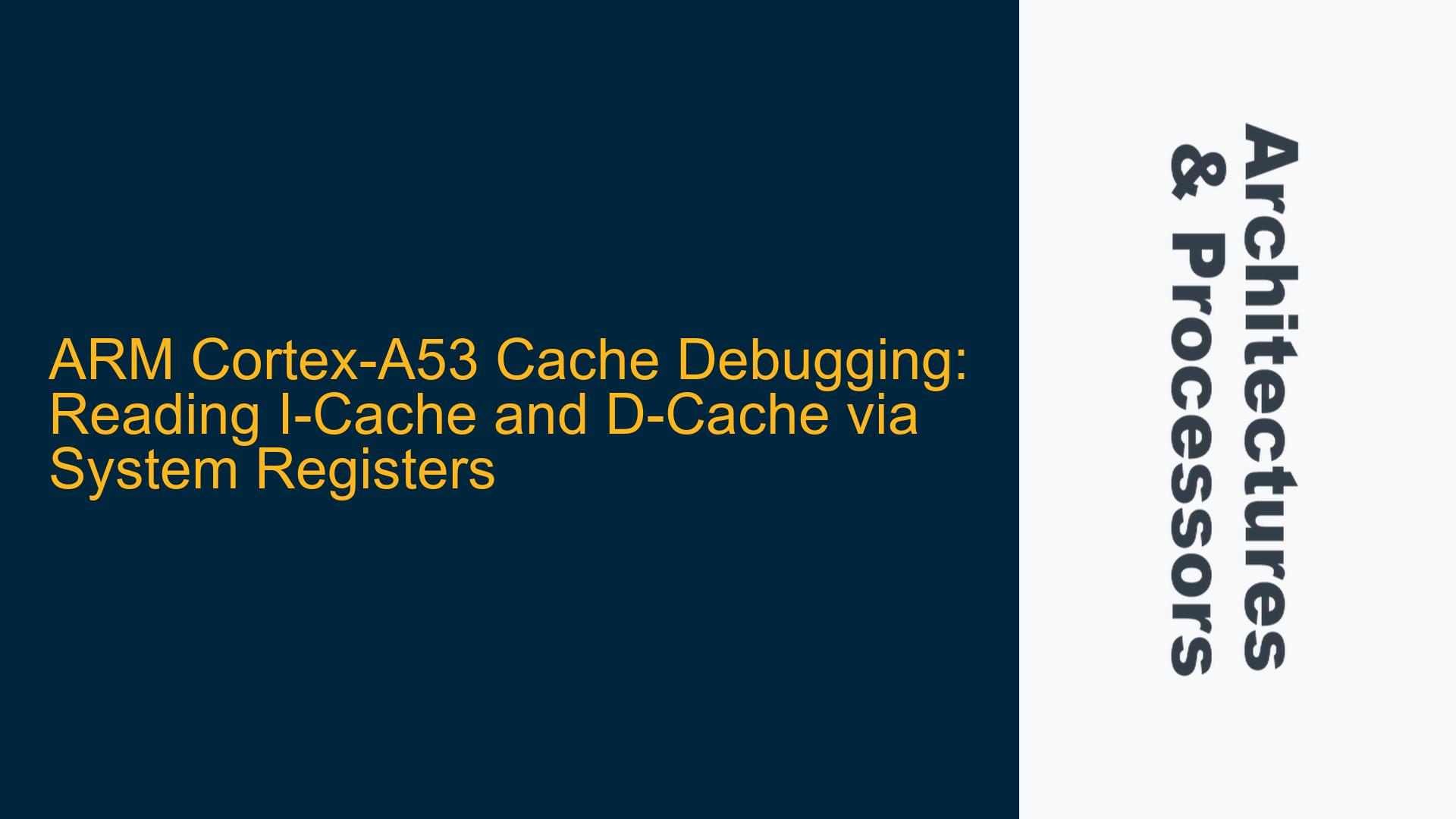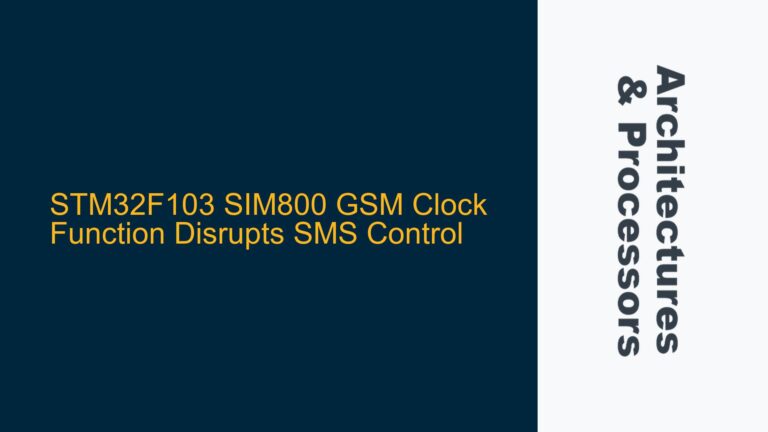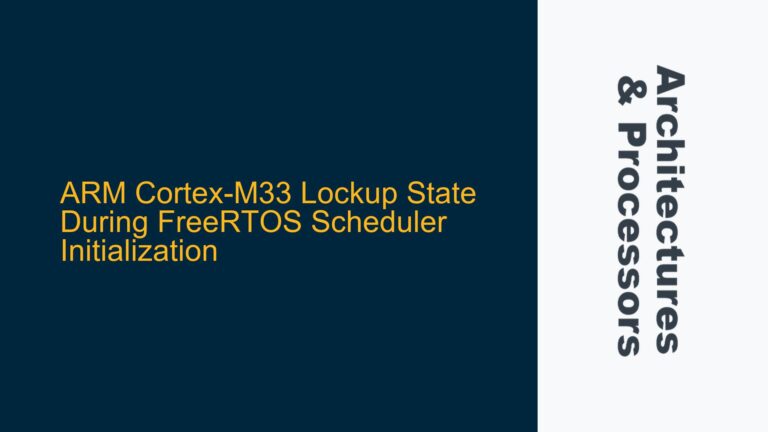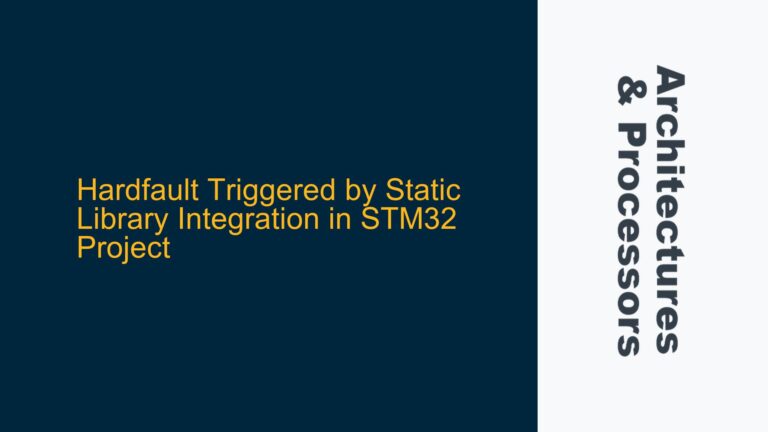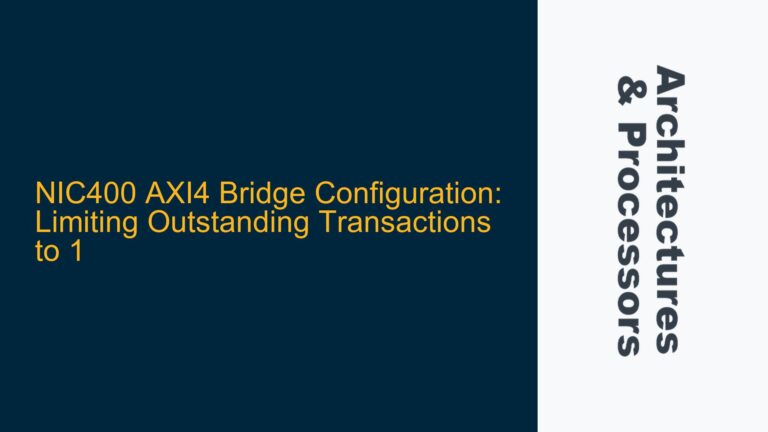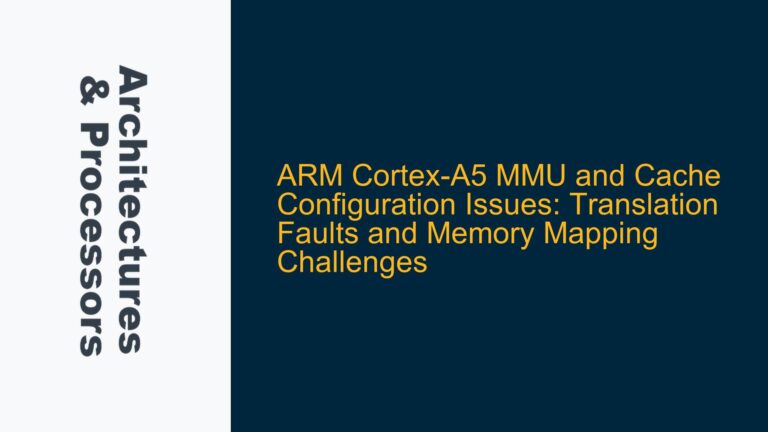ARM Cortex-A53 Cache Debugging Mechanism Overview
The ARM Cortex-A53 processor provides a sophisticated mechanism for debugging and inspecting its internal cache structures, including the Instruction Cache (I-Cache) and Data Cache (D-Cache). This mechanism is facilitated through a set of Implementation-Defined system registers, which allow direct access to the internal memory used by the cache and Translation Lookaside Buffer (TLB) structures. These registers, such as CDBGDR0, CDBGDR1, CDBGDR2, CDBGDR3, CDBGDCT, CDBGICT, CDBGDCD, CDBGICD, and CDBGTD, are specifically designed for cache debugging purposes.
The primary objective of utilizing these registers is to enable software to read the entire contents of the I-Cache and D-Cache. This capability is crucial for debugging complex cache-related issues, such as cache coherency problems, cache line eviction anomalies, and incorrect cache state transitions. However, the process of reading the cache contents is not straightforward and requires a deep understanding of the ARM Cortex-A53 architecture, particularly the cache organization and the behavior of the debug registers.
The ARM Technical Reference Manual (TRM) for the Cortex-A53 processor provides a high-level description of these debug registers and their functionality. However, the TRM does not provide detailed examples or step-by-step instructions on how to use these registers to read the cache contents. This lack of detailed guidance often leads to confusion and implementation challenges for engineers attempting to debug cache-related issues.
Cache Debugging Register Misinterpretation and Implementation Challenges
One of the primary challenges in utilizing the ARM Cortex-A53 cache debugging mechanism is the potential misinterpretation of the TRM documentation. The TRM states that the Cortex-A53 processor provides a mechanism to read the internal memory used by the Cache and TLB structures through Implementation-Defined system registers. However, this statement can be ambiguous, leading to questions about whether the mechanism allows reading the cache memory itself or some other memory associated with the cache.
The ambiguity arises from the term "internal memory used by the Cache and TLB structures." This phrase could be interpreted in two ways: (1) the actual cache memory, which stores the cached data and instructions, or (2) auxiliary memory structures that support the cache and TLB operations, such as tag arrays or status registers. The correct interpretation is that the mechanism allows reading the actual cache memory, including the data stored in the I-Cache and D-Cache.
Another challenge is the lack of example code or detailed implementation guidelines in the TRM. Engineers often struggle to translate the high-level descriptions of the debug registers into practical code that can be used to read the cache contents. This lack of guidance can lead to incorrect implementations, where the debug registers are not used correctly, resulting in incomplete or inaccurate cache dumps.
Additionally, the process of reading the cache contents requires careful management of the cache state to ensure that the cache is not modified during the read operation. This involves locking the I-Cache and D-Cache to prevent further caching operations, which could alter the cache contents while they are being read. The TRM does not provide explicit instructions on how to lock the cache, adding another layer of complexity to the implementation.
Implementing Cache Debugging: Reading I-Cache and D-Cache via System Registers
To successfully read the entire contents of the I-Cache and D-Cache using the ARM Cortex-A53 debug registers, a systematic approach is required. This approach involves understanding the cache organization, correctly interpreting the debug registers, and implementing the necessary steps to lock the cache and read its contents.
Understanding Cache Organization
The ARM Cortex-A53 processor features a Harvard architecture, with separate I-Cache and D-Cache. Each cache is organized into sets and ways, with each cache line containing a tag, data, and status information. The debug registers provide access to the cache data and tags, allowing software to read the contents of each cache line.
The CDBGDR0, CDBGDR1, CDBGDR2, and CDBGDR3 registers are used to read the cache data, while the CDBGDCT and CDBGICT registers are used to read the cache tags. The CDBGDCD and CDBGICD registers are used to read the cache data for the D-Cache and I-Cache, respectively. The CDBGTD register is used to read the TLB data.
Reading Cache Contents
To read the contents of the I-Cache and D-Cache, the following steps should be followed:
-
Disable Interrupts: Before accessing the debug registers, it is essential to disable interrupts to prevent any context switches or cache operations that could interfere with the cache read process.
-
Lock the Cache: To ensure that the cache contents are not modified during the read operation, the cache must be locked. This can be achieved by setting the appropriate bits in the cache control registers. For the I-Cache, the ICIMVAU (Instruction Cache Invalidate by Modified Virtual Address to PoU) operation can be used to invalidate the cache lines and prevent further caching. For the D-Cache, the DCIMVAC (Data Cache Invalidate by Modified Virtual Address to PoC) operation can be used.
-
Access the Debug Registers: Once the cache is locked, the debug registers can be accessed to read the cache contents. The CDBGDR0, CDBGDR1, CDBGDR2, and CDBGDR3 registers are used to read the cache data, while the CDBGDCT and CDBGICT registers are used to read the cache tags. The CDBGDCD and CDBGICD registers are used to read the cache data for the D-Cache and I-Cache, respectively.
-
Read Cache Lines: The cache is organized into sets and ways, and each cache line must be read individually. The process involves iterating through each set and way, reading the cache tag and data for each cache line, and storing the results in memory for further analysis.
-
Unlock the Cache: After the cache contents have been read, the cache must be unlocked to allow normal caching operations to resume. This involves clearing the cache lock bits in the cache control registers.
Example Code
The following example code demonstrates how to read the contents of the I-Cache using the ARM Cortex-A53 debug registers:
void read_icache() {
// Disable interrupts
__disable_irq();
// Lock the I-Cache
__asm volatile("IC IALLUIS"); // Invalidate all I-Cache to PoU, Inner Shareable
// Access the debug registers
uint32_t cache_data[4];
uint32_t cache_tag;
for (int set = 0; set < NUM_SETS; set++) {
for (int way = 0; way < NUM_WAYS; way++) {
// Read the cache tag
__asm volatile("MCR p15, 0, %0, c7, c14, 2" : : "r" ((set << 5) | (way << 30)));
__asm volatile("MRC p15, 0, %0, c7, c14, 2" : "=r" (cache_tag));
// Read the cache data
__asm volatile("MCR p15, 0, %0, c7, c14, 0" : : "r" ((set << 5) | (way << 30)));
__asm volatile("MRC p15, 0, %0, c7, c14, 0" : "=r" (cache_data[0]));
__asm volatile("MRC p15, 0, %0, c7, c14, 1" : "=r" (cache_data[1]));
__asm volatile("MRC p15, 0, %0, c7, c14, 2" : "=r" (cache_data[2]));
__asm volatile("MRC p15, 0, %0, c7, c14, 3" : "=r" (cache_data[3]));
// Store the cache data and tag for further analysis
store_cache_line(set, way, cache_tag, cache_data);
}
}
// Unlock the I-Cache
__asm volatile("IC IALLU"); // Invalidate all I-Cache to PoU
// Enable interrupts
__enable_irq();
}
Conclusion
Reading the entire contents of the I-Cache and D-Cache in the ARM Cortex-A53 processor is a complex task that requires a deep understanding of the cache organization and the debug registers. By following the systematic approach outlined above, engineers can successfully implement cache debugging and gain valuable insights into the cache behavior, which is essential for resolving complex cache-related issues. The example code provided demonstrates how to read the I-Cache contents using the debug registers, and a similar approach can be used for the D-Cache. With careful implementation and thorough testing, engineers can leverage the ARM Cortex-A53 cache debugging mechanism to enhance the reliability and performance of their SoC designs.
